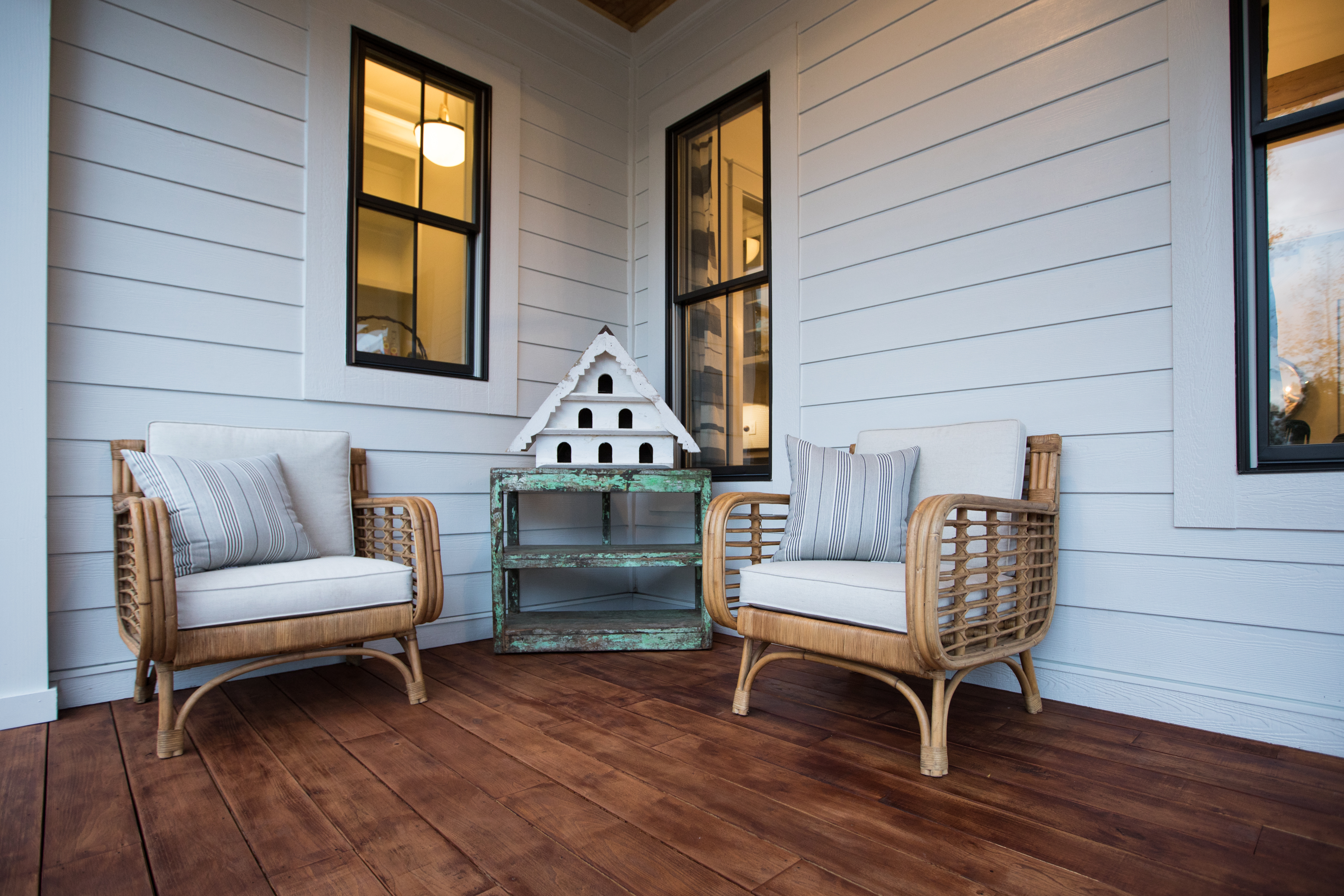Tips for cleaning your siding
There’s nothing like the look and feel of clean. Whether it’s your kitchen tile floor, your car, or your home’s siding and trim. When something is so clean it sparkles, you feel accomplished, and it looks its best.

You can achieve that same sparkle on your home’s siding by cleaning it once or twice a year. It’s recommended to pull out the garden hose and douse your home siding every 6-12 months. Don't use a high-pressure power washer to get the job done, as it turns out a low-pressure hose and a soft medium bristle (nonmetal) brush is the best way to remove dirt and debris from James Hardie® siding and trim.
Whether you’re removing dirt, grease or mildew from your James Hardie siding, we’ve gathered the tools, solutions and methods you need to keep your siding clean as a whistle.
HOW TO CLEAN SIDING
Below are some of the biggest causes for dirty siding and how to best clean them to get your home looking its absolute best.
THE CULPRIT: DIRT
Tools:
Big storms and windy days pick up dust and dirt that can cling to your home siding.
To clean the muck from your home’s exterior siding without scrubbing, you’ll want a soft cloth, a soft brush (such as an All-Paint poly brush, a chip brush or horsehair bench brush) and a garden hose.
Be sure not to use a hard metal brush or abrasive sponge—these can damage the siding’s finish.
Solution:
Water
Method:
If using a brush, brush the siding’s surface dust or dirt, then rinse the area with a garden hose.
If using a soft cloth, wet the cloth, then wipe the area in a side-to-side motion in the direction of the plank, shingle or panel siding until clean. From there, rinse the area with clean water.
Pro tip:
Top to bottom: Work a small section at a time, start from the top and work your way down to prevent dripping or streaking onto the cleaned area.

THE CULPRIT: OIL, GREASE OR OTHER ORGANIC CONTAMINANTS
Tools:
Oil-covered hands and greasy fingers can make their way to your home’s siding, in which case you’ll want to grab a soft cloth and a garden hose.
Solution:
Mild liquid dishwashing soap and water.
Method:
Grab your soft cloth and saturate it with soapy water. Clean the stained siding while rinsing your cloth frequently. Once the siding is completely sudsed up, use a garden hose to rinse the area.
Pro tip:
Keep Wet: Do not allow soap or cleaners to dry on the siding. Instead, continually rinse the area until all of the soap has washed off of the siding. Do not use harsh chemicals, such as bleach or acid.

THE CULPRIT: MOLD AND MILDEW
Tools:
Mildew can resemble dirt at times, so when it comes time to clean your siding, be sure to inspect the planks, panels or shingles. If you land on any mold or mildew, you’ll need a soft cloth (or soft sponge) and a garden hose.
Solution:
Mildew-specific cleaner and water.
Method:
Lightly scrub the area that shows any signs of mildew with a soft cloth or soft sponge and be sure to carefully follow the mildew cleaner instructions. From there, use the garden hose to rinse the area.
Pro tip:
Take care with chemicals: If you’re opting to use a stronger chemical to clean your siding, be sure to follow all instructions and precautions that are outlined on the label of the mildew cleaner and wear all protective equipment that is prescribed.

Note: The extent and nature of the maintenance required will depend on the geographical location and the exposure of the building. Always follow the instructions and precautions outlined in the James Hardie ColorPlus Technology literature that was supplied with the product and the information that is available on the James Hardie website (www.jameshardie.com), including James Hardie ColorPlus Technology instructions and precautions.
Unable to find Uniform Context. Ensure the devtools plugin is activated.